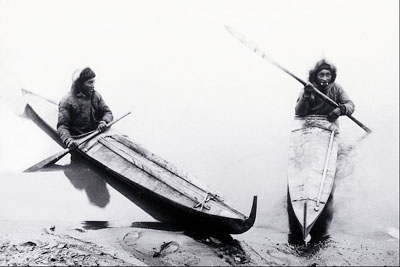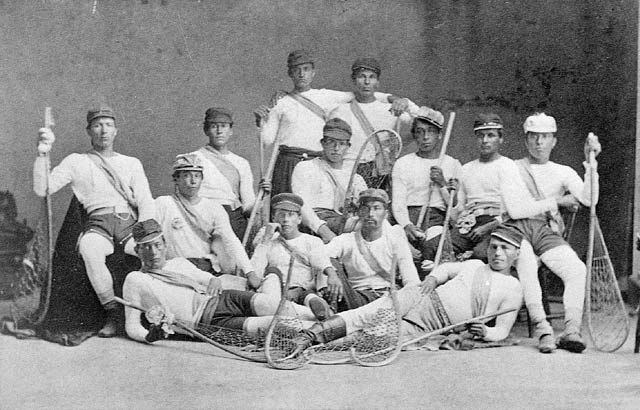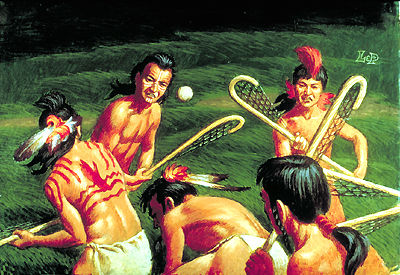Article
In-line Skating
In-line skating is a recent recreational sport. During the 1990s it experienced an incredible boom that relegated traditional roller skating to the museum.

Enter your search term
Signing up enhances your TCE experience with the ability to save items to your personal reading list, and access the interactive map.
Create AccountArticle
In-line skating is a recent recreational sport. During the 1990s it experienced an incredible boom that relegated traditional roller skating to the museum.
"https://www.thecanadianencyclopedia.ca/images/tce_placeholder.jpg?v=e9dca980c9bdb3aa11e832e7ea94f5d9" // resources/views/front/categories/view.blade.phphttps://www.thecanadianencyclopedia.ca/images/tce_placeholder.jpg?v=e9dca980c9bdb3aa11e832e7ea94f5d9

Article
Bowling, indoor, game in which a player attempts to knock down pins by propelling a ball down a wooden lane. Similar games were played as early as 5000 BC in Egypt. The 10-pin version was developed in the US in the 19th century, and 5-pin bowling was invented in Canada in 1908 or 1909 by Thomas F.
"https://www.thecanadianencyclopedia.ca/images/tce_placeholder.jpg?v=e9dca980c9bdb3aa11e832e7ea94f5d9" // resources/views/front/categories/view.blade.phphttps://www.thecanadianencyclopedia.ca/images/tce_placeholder.jpg?v=e9dca980c9bdb3aa11e832e7ea94f5d9

Article
International Hockey Hall of Fame and Museum, located in Kingston, Ont, was founded in 1943. The present building was constructed in 1961-62 and opened in 1965.
"https://www.thecanadianencyclopedia.ca/images/tce_placeholder.jpg?v=e9dca980c9bdb3aa11e832e7ea94f5d9" // resources/views/front/categories/view.blade.phphttps://www.thecanadianencyclopedia.ca/images/tce_placeholder.jpg?v=e9dca980c9bdb3aa11e832e7ea94f5d9

"https://www.thecanadianencyclopedia.ca/images/tce_placeholder.jpg?v=e9dca980c9bdb3aa11e832e7ea94f5d9" // resources/views/front/categories/view.blade.phphttps://www.thecanadianencyclopedia.ca/images/tce_placeholder.jpg?v=e9dca980c9bdb3aa11e832e7ea94f5d9

Macleans
The bar at the Palace Hotel in Lausanne breathes old money, of the sort expected in a sedate but five-star Swiss lodging where the price of a room starts at $400 a night and spirals upward. The walls are red velvet, the ceiling wood-panelled, the seats dark leather.This article was originally published in Maclean's Magazine on March 29, 1999
"https://www.thecanadianencyclopedia.ca/images/tce_placeholder.jpg?v=e9dca980c9bdb3aa11e832e7ea94f5d9" // resources/views/front/categories/view.blade.phphttps://www.thecanadianencyclopedia.ca/images/tce_placeholder.jpg?v=e9dca980c9bdb3aa11e832e7ea94f5d9

Article
On 15 April 1947, Jackie Robinson played in his debut game with the Brooklyn Dodgers, becoming the first African American to play in the major leagues in the modern era. Prior to that point, professional baseball in the United States was segregated, with African Americans playing in the Negro leagues. When Robinson broke Major League Baseball’s colour barrier in 1947, he entered American history books. What many baseball fans may not realize, however, is that Robinson was embraced by Canadian fans one year earlier as a member of the Montreal Royals, a farm team for the Brooklyn Dodgers.
"https://d3d0lqu00lnqvz.cloudfront.net/media/media/ab20352b-957e-4389-9015-5d9b5af0549d.jpg" // resources/views/front/categories/view.blade.phphttps://d3d0lqu00lnqvz.cloudfront.net/media/media/ab20352b-957e-4389-9015-5d9b5af0549d.jpg

Article
The James Norris Memorial Trophy is awarded annually to the player selected by hockey writers as the best defenceman in the National Hockey League (NHL) during the regular season. It was presented to the league in 1953 by the children of James Norris, former owner of the Detroit Red Wings. The winner is chosen through a poll of the Professional Hockey Writers’ Association at the end of the regular season and is awarded after the Stanley Cup playoffs.
"https://d3d0lqu00lnqvz.cloudfront.net/media/new_article_images/James_Norris_Memorial_Trophy.jpg" // resources/views/front/categories/view.blade.phphttps://d3d0lqu00lnqvz.cloudfront.net/media/new_article_images/James_Norris_Memorial_Trophy.jpg

Article
Plans for the Jeux du Québec were drawn up in the late sixties. Québec amateur sports stakeholders then proposed holding a competition that would stimulate interest in sports into the farthest reaches of the province.
"https://www.thecanadianencyclopedia.ca/images/tce_placeholder.jpg?v=e9dca980c9bdb3aa11e832e7ea94f5d9" // resources/views/front/categories/view.blade.phphttps://www.thecanadianencyclopedia.ca/images/tce_placeholder.jpg?v=e9dca980c9bdb3aa11e832e7ea94f5d9

Article
Judo literally means "the gentle way." It is a sport developed from JIU-JITSU, a group of self-defence methods, but with certain harmful techniques eliminated or modified for safety's sake. Judo incorporates ethics, art and science into a sport that uses the opponents' strength against themselves.
"https://www.thecanadianencyclopedia.ca/images/tce_placeholder.jpg?v=e9dca980c9bdb3aa11e832e7ea94f5d9" // resources/views/front/categories/view.blade.phphttps://www.thecanadianencyclopedia.ca/images/tce_placeholder.jpg?v=e9dca980c9bdb3aa11e832e7ea94f5d9

Article
Karate, which translates as "empty hands," is a form of unarmed combat employing a variety of punches, open-hand strikes, kicks and blocks.
"https://www.thecanadianencyclopedia.ca/images/tce_placeholder.jpg?v=e9dca980c9bdb3aa11e832e7ea94f5d9" // resources/views/front/categories/view.blade.phphttps://www.thecanadianencyclopedia.ca/images/tce_placeholder.jpg?v=e9dca980c9bdb3aa11e832e7ea94f5d9

Article
For over 2,000 years, the Inuit have used kayaks for traveling and hunting expeditions, except for the most northerly polar Inuit. Essentially a one-person, closed-deck hunting craft, it was employed occasionally for the transport of goods. Although kayaks are rarely used today for hunting, the kayak remains an important part of Inuit culture and heritage.
"https://d3d0lqu00lnqvz.cloudfront.net/media/media/cbb4d419-1b24-4855-83c1-531a98fb7874.jpg" // resources/views/front/categories/view.blade.phphttps://d3d0lqu00lnqvz.cloudfront.net/media/media/cbb4d419-1b24-4855-83c1-531a98fb7874.jpg

Editorial
The following article is an editorial written by The Canadian Encyclopedia staff. Editorials are not usually updated. With our national game now a multi-billion-dollar professional sport, it is perhaps comforting to look back to simpler times when hockey was closer to community, and was played for love and glory by amateurs. In the early days of Stanley Cup competition, any Canadian team with some success at the senior level could challenge the current champs. In 1905 one of the strangest challenges came from Dawson City, Yukon.
"https://d3d0lqu00lnqvz.cloudfront.net/media/media/8075ba2d-1fa1-47e3-bedc-30e2da0d6139.jpg" // resources/views/front/categories/view.blade.phphttps://d3d0lqu00lnqvz.cloudfront.net/media/media/8075ba2d-1fa1-47e3-bedc-30e2da0d6139.jpg

Article
Lacrosse is one of the oldest organized sports in North America. While at one point it was a field game or ritual played by First Nations, it became popular among non-Indigenous peoples in the mid-1800s. When the National Lacrosse Association of Canada was formed in 1867, it was the Dominion of Canada’s first governing body of sport. Lacrosse was confirmed as Canada’s official summer sport in 1994. The Canadian national lacrosse teams (men and women) rank highly in the world standings, both in field and box lacrosse.
"https://d3d0lqu00lnqvz.cloudfront.net/media/media/0385ec20-f89a-4555-a7c1-78c41bbdc220.jpg" // resources/views/front/categories/view.blade.phphttps://d3d0lqu00lnqvz.cloudfront.net/media/media/0385ec20-f89a-4555-a7c1-78c41bbdc220.jpg

Article
Lacrosse, the Creator’s Game, is known to various First Nations in North America by many different names, including baggataway (Algonquian), kabocha-toli (Choctaw) and tewaarathon (Mohawk).
"https://d3d0lqu00lnqvz.cloudfront.net/media/media/84b0321c-885e-4185-bb02-953cd0a2b81b.jpg" // resources/views/front/categories/view.blade.phphttps://d3d0lqu00lnqvz.cloudfront.net/media/media/84b0321c-885e-4185-bb02-953cd0a2b81b.jpg

Article
Traditional lacrosse sticks are made of a single piece of wood, bent to form the head of the stick (the part used for catching, carrying, and throwing the ball). Traditionally, Indigenous stick makers wrapped pliable steamed hickory around a tree in order to bend it.
"https://d3d0lqu00lnqvz.cloudfront.net/media/media/0385ec20-f89a-4555-a7c1-78c41bbdc220.jpg" // resources/views/front/categories/view.blade.phphttps://d3d0lqu00lnqvz.cloudfront.net/media/media/0385ec20-f89a-4555-a7c1-78c41bbdc220.jpg
